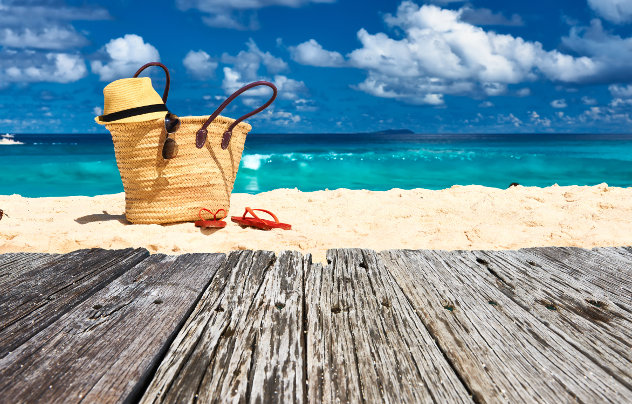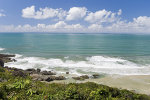Why should you buy property in Costa Rica?
Daniela Quiros, Friday, 1 November 2013

This article is part of a series of 8 articles about buying property in Costa Rica. The other articles in the series cover the following topics:
Costa Rica may lack worldwide fame, but American and Canadian retirees have long ago fancied this little piece of Eco paradise in the middle of Central America. Among other countries in the region, Costa Rica is the most welcoming for foreign investors and people looking to buy property.
60 years of best democratic traditions, 97% literacy, bilingual population, absence of the army and militaristic traditions, and a fast growing economy makes buying real estate or investing, lucrative.
Costa Rica is a great place to retire, expand a business, or raise a family. High standards of medical care, with CIMA the leader in the area’s medical providers, made Costa Rica a destination for medical tourism number one in all of the Americas. Affordability and quality of dental care and plastic surgery made this country a Mecca for Americans knowing the value of the price-quality ratio. The country offers a wide choice of international schools with bilingual highly professional and accredited staff – Waldorf, Lincoln, Humbold, American International School, and many more.
Ecology is one of the nation’s main priorities. Gorgeous National Parks, virgin beaches, awe-inspiring mountains and volcanoes create a unique blend of diverse tourism attractions, all within an hour to 4 hrs drive from one another. Overall, Costa Rica offers a rare union of Nature with civilization.
Some may have concerns regarding tropical climate. Mexico might have hurricanes occasionally. Cuba might experience heavy tropical showers. Nicaragua might be drowning in rains during the rainy season. Costa Rica, however, is an all-winner again. There are two seasons in this country, and none of them is winter. The Dry Season, or the High Season, from December to April, is sunny and warm. The Pacific Coast gets hotter and more humid than the Caribbean. The Green Season, or the Rainy Season, is typically the period between May to November. The coastal regions never suffer from heavy rains that would scare away tourists. It only rains for an hour, or so, in the afternoon. Mornings are sunny and hot; evenings are pleasantly refreshing. The mountain parts and the Central Valley may get more rains, but with the average temperatures of +26-38 C, rains are most welcome. Costa Rica is home to 5% of animal and plant life on the entire planet, quite a lot for a small country.
If compared to most of the developed countries, Costa Rica offers a higher standard of food products, due to no artificial ingredients policies. The forgotten taste of natural dairy products, freshly baked bread from family owned little bakeries, fresh meat and vegetables from the little local markets surpass supermarkets in quality and price. Supermarkets, on the other hand, are numerous and well located, with Price Smart and Wallmart leading in the area.
International conglomerates, such as Intel, Procter & Gamble, Unysis and others have chosen this country to establish their offices and run operations from here. Tourism and Technology surpass agriculture in revenue, a unique situation for Central America.
If none of the above is convincing, flat facts may put your doubts to rest.
Costa Rica consists of seven provinces: Alajuela, Cartago, Guanacaste, Heredia, Limon, Puntarenas and San Jose. Technically, there are many zones favored by foreign residents of Costa Rica for buying property: Pacific Coast, Caribbean Coast and Central Valley.
The fact that Costa Rica is abundant in wildlife does not mean that there are no luxury properties in the country. On the contrary, because so many foreign residents chose this country as one of their favorite places to live, Costa Rican real estate market offers a great variety of real estate options suitable for all strata of buyers, from affordable options to exclusive mansions.
Luxury resorts are all over the country, primarily in Guanacaste. The Papagayo Peninsula is famous for its exclusive beaches. Playa Conchal offers high class ocean front properties. Punta Islita, a little secluded beach town on the Nicoya Peninsula, offers a high class level of sustainability and civilized environment in one.
Jaco and Tamarindo in Guanacaste area is surf and nightlife Mecca. This is where most of the first-timers go. These surf towns have developed a decent infrastructure. Santa Teresa, on Nicoya Peninsula, is a secluded private piece of paradise. Many foreigners prefer the peace and quiet it offers.
The Caribbean Coast, on the other hand, is the next wave of real estate boom in Costa Rica. The region is further from the capital and the Central Valley, but a favorite destination for backpackers and surfers. Puerto Viejo, in Limon, consists of locals and foreign residents owning and renting property here in almost equal proportions. Limon’s property market is on the rise.
Tortuguero and Manuel Antonio are natural reserves with cozy little beach towns with well-developed infrastructure.
Escazu, Santa Ana and the capital San Jose are also areas famous among foreign residents of Costa Rica. These regions offer exclusive condominiums in gated communities with swimming pools and cleaning services. Escazu is also a shopping destination #1 in all of Costa Rica, with Multiplaza beating some of the 5th Avenue shopping malls.
Price Trends
There are various types of real estate investors in Costa Rica. First, there are foreigners who want to protect their funds from dubious government strategies in their home countries. Secondly, young and ambitious Costa Ricans eligible for mortgages from local banks. Finally, a new wave of foreign investors comes from Europe and Russia. These strata form a fluctuating demand in real estate market of Costa Rica.
The sellers are also of both local origin and the foreigners owning real estate here. The construction in this country is reliable due to obligatory requirements to build homes that will withstand seismic activity.
Conditionally, the real estate market has two segments. The first market comprises the Central Valley area with the capital San Jose, Alajuela, Heredia and Cartago. For the past 20 years, real estate prices in the area have been steadily increasing. Depending on a variety of factors, like neighborhood, architecture, design and security, the prices for single-family homes with three or four bedrooms are between $100,000 and $600,000. However, a new trend in real estate puts the focus on houses and condominiums in gated communities that offer better security. The prices for these slots start at $200,000 for a two or three bedroom condo.
A new concept in condo communities is a single bedroom apartment with first-class amenities, often with a swimming pool. These options are available at prices starting at $80,000.
Expensive apartment tower projects are popular among wealthy Costa Ricans ready to pay $400,000-$1.5 million for an apartment overlooking National Stadium.
Foreigners, however, prefer the beach areas. The second real estate market of Costa Rica comprises the mid-Pacific area and Guanacaste. Savvy realtors directed their marketing campaign directly at the U.S. and Canadian investors quite successfully. A large number of coastal residences overlooking the ocean belong to the U.S. and Canadian expats. As of mid-2013, coastal houses or condos in these areas come at affordable $80,000-$125,000.
Perspective
Costa Rica has region which potential is still undiscovered. The Caribbean Coast offers real estate and property opportunities for half the prices of Pacific region. Real estate analysts predict smart money looking East, to the Caribbean Coast of Costa Rica. There are some multi-billion-dollar projects coming up, such as petroleum refinery and container port, as well as a marina, which will potentially revolutionize the area.

This article is part of a series of 8 articles about buying property in Costa Rica. The other articles in the series cover the following topics:
Costa Rica may lack worldwide fame, but American and Canadian retirees have long ago fancied this little piece of Eco paradise in the middle of Central America. Among other countries in the region, Costa Rica is the most welcoming for foreign investors and people looking to buy property.
60 years of best democratic traditions, 97% literacy, bilingual population, absence of the army and militaristic traditions, and a fast growing economy makes buying real estate or investing, lucrative.
Costa Rica is a great place to retire, expand a business, or raise a family. High standards of medical care, with CIMA the leader in the area’s medical providers, made Costa Rica a destination for medical tourism number one in all of the Americas. Affordability and quality of dental care and plastic surgery made this country a Mecca for Americans knowing the value of the price-quality ratio. The country offers a wide choice of international schools with bilingual highly professional and accredited staff – Waldorf, Lincoln, Humbold, American International School, and many more.
Ecology is one of the nation’s main priorities. Gorgeous National Parks, virgin beaches, awe-inspiring mountains and volcanoes create a unique blend of diverse tourism attractions, all within an hour to 4 hrs drive from one another. Overall, Costa Rica offers a rare union of Nature with civilization.
Some may have concerns regarding tropical climate. Mexico might have hurricanes occasionally. Cuba might experience heavy tropical showers. Nicaragua might be drowning in rains during the rainy season. Costa Rica, however, is an all-winner again. There are two seasons in this country, and none of them is winter. The Dry Season, or the High Season, from December to April, is sunny and warm. The Pacific Coast gets hotter and more humid than the Caribbean. The Green Season, or the Rainy Season, is typically the period between May to November. The coastal regions never suffer from heavy rains that would scare away tourists. It only rains for an hour, or so, in the afternoon. Mornings are sunny and hot; evenings are pleasantly refreshing. The mountain parts and the Central Valley may get more rains, but with the average temperatures of +26-38 C, rains are most welcome. Costa Rica is home to 5% of animal and plant life on the entire planet, quite a lot for a small country.
If compared to most of the developed countries, Costa Rica offers a higher standard of food products, due to no artificial ingredients policies. The forgotten taste of natural dairy products, freshly baked bread from family owned little bakeries, fresh meat and vegetables from the little local markets surpass supermarkets in quality and price. Supermarkets, on the other hand, are numerous and well located, with Price Smart and Wallmart leading in the area.
International conglomerates, such as Intel, Procter & Gamble, Unysis and others have chosen this country to establish their offices and run operations from here. Tourism and Technology surpass agriculture in revenue, a unique situation for Central America.
If none of the above is convincing, flat facts may put your doubts to rest.
- The Costa Rican government adopted a plan for the country to become the first carbon-neutral area by 2021.
- The New Economics Foundation ranked Costa Rica first in its Happy Planet Index two times in 2009 and 2012.
- Costa Rica also ranked first as the greenest country in the world in 2009.
- Costa Rica banned recreational hunting in 2012.
Costa Rica consists of seven provinces: Alajuela, Cartago, Guanacaste, Heredia, Limon, Puntarenas and San Jose. Technically, there are many zones favored by foreign residents of Costa Rica for buying property: Pacific Coast, Caribbean Coast and Central Valley.
The fact that Costa Rica is abundant in wildlife does not mean that there are no luxury properties in the country. On the contrary, because so many foreign residents chose this country as one of their favorite places to live, Costa Rican real estate market offers a great variety of real estate options suitable for all strata of buyers, from affordable options to exclusive mansions.
Luxury resorts are all over the country, primarily in Guanacaste. The Papagayo Peninsula is famous for its exclusive beaches. Playa Conchal offers high class ocean front properties. Punta Islita, a little secluded beach town on the Nicoya Peninsula, offers a high class level of sustainability and civilized environment in one.
Jaco and Tamarindo in Guanacaste area is surf and nightlife Mecca. This is where most of the first-timers go. These surf towns have developed a decent infrastructure. Santa Teresa, on Nicoya Peninsula, is a secluded private piece of paradise. Many foreigners prefer the peace and quiet it offers.
The Caribbean Coast, on the other hand, is the next wave of real estate boom in Costa Rica. The region is further from the capital and the Central Valley, but a favorite destination for backpackers and surfers. Puerto Viejo, in Limon, consists of locals and foreign residents owning and renting property here in almost equal proportions. Limon’s property market is on the rise.
Tortuguero and Manuel Antonio are natural reserves with cozy little beach towns with well-developed infrastructure.
Escazu, Santa Ana and the capital San Jose are also areas famous among foreign residents of Costa Rica. These regions offer exclusive condominiums in gated communities with swimming pools and cleaning services. Escazu is also a shopping destination #1 in all of Costa Rica, with Multiplaza beating some of the 5th Avenue shopping malls.
Price Trends
There are various types of real estate investors in Costa Rica. First, there are foreigners who want to protect their funds from dubious government strategies in their home countries. Secondly, young and ambitious Costa Ricans eligible for mortgages from local banks. Finally, a new wave of foreign investors comes from Europe and Russia. These strata form a fluctuating demand in real estate market of Costa Rica.
The sellers are also of both local origin and the foreigners owning real estate here. The construction in this country is reliable due to obligatory requirements to build homes that will withstand seismic activity.
Conditionally, the real estate market has two segments. The first market comprises the Central Valley area with the capital San Jose, Alajuela, Heredia and Cartago. For the past 20 years, real estate prices in the area have been steadily increasing. Depending on a variety of factors, like neighborhood, architecture, design and security, the prices for single-family homes with three or four bedrooms are between $100,000 and $600,000. However, a new trend in real estate puts the focus on houses and condominiums in gated communities that offer better security. The prices for these slots start at $200,000 for a two or three bedroom condo.
A new concept in condo communities is a single bedroom apartment with first-class amenities, often with a swimming pool. These options are available at prices starting at $80,000.
Expensive apartment tower projects are popular among wealthy Costa Ricans ready to pay $400,000-$1.5 million for an apartment overlooking National Stadium.
Foreigners, however, prefer the beach areas. The second real estate market of Costa Rica comprises the mid-Pacific area and Guanacaste. Savvy realtors directed their marketing campaign directly at the U.S. and Canadian investors quite successfully. A large number of coastal residences overlooking the ocean belong to the U.S. and Canadian expats. As of mid-2013, coastal houses or condos in these areas come at affordable $80,000-$125,000.
Perspective
Costa Rica has region which potential is still undiscovered. The Caribbean Coast offers real estate and property opportunities for half the prices of Pacific region. Real estate analysts predict smart money looking East, to the Caribbean Coast of Costa Rica. There are some multi-billion-dollar projects coming up, such as petroleum refinery and container port, as well as a marina, which will potentially revolutionize the area.

All types of property for sale in Costa Rica by private sellers and estate agents. Find your perfect villa, condominium or apartment in in the Central valley area or the Pacific coastal region.
 Buying property in Costa Rica inevitably involves costs other than the price tag attached to the house. Lawyers, government, appraising agents, like it
or not, are a necessary part of any property acquisition. In this overview, we tried to provide you with a brief outline of potential costs a buyer
faces when closing a deal. Bear in mind that some of the values may be subject to change, if the Costa Rican Ministry of Finance decides so.
Buying property in Costa Rica inevitably involves costs other than the price tag attached to the house. Lawyers, government, appraising agents, like it
or not, are a necessary part of any property acquisition. In this overview, we tried to provide you with a brief outline of potential costs a buyer
faces when closing a deal. Bear in mind that some of the values may be subject to change, if the Costa Rican Ministry of Finance decides so.
More articles